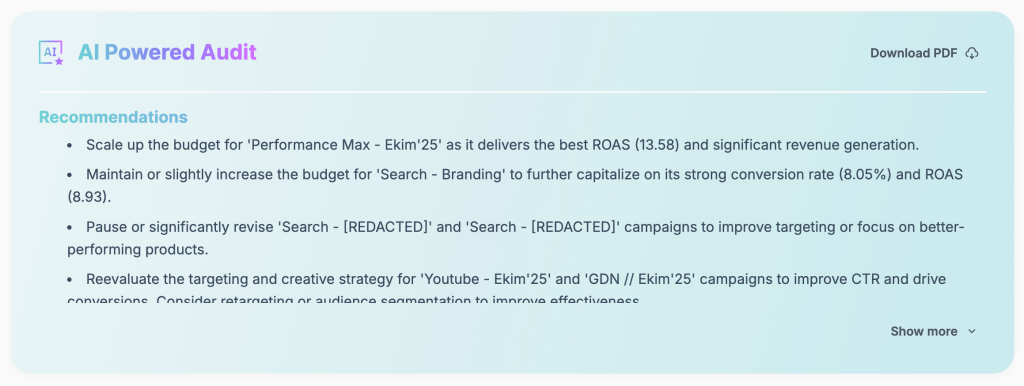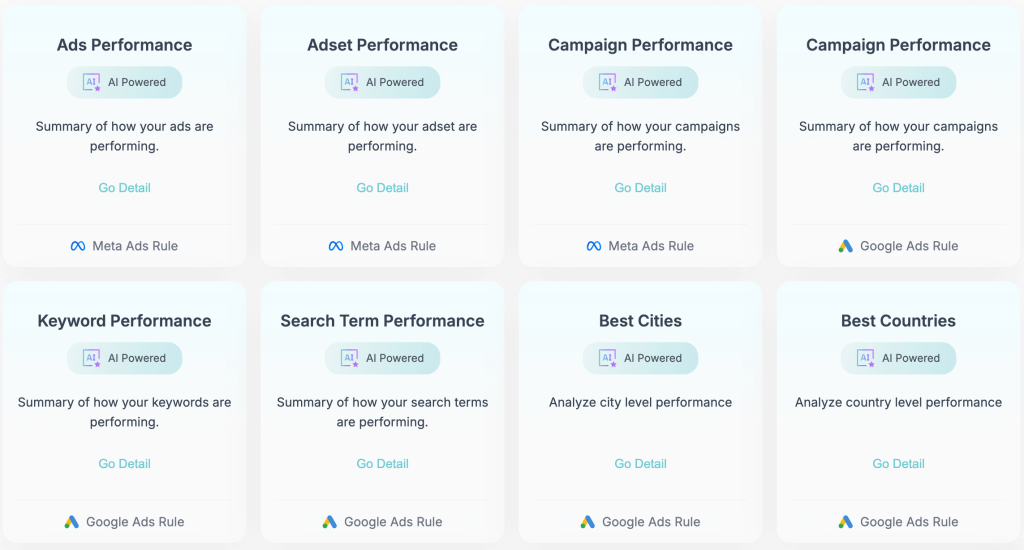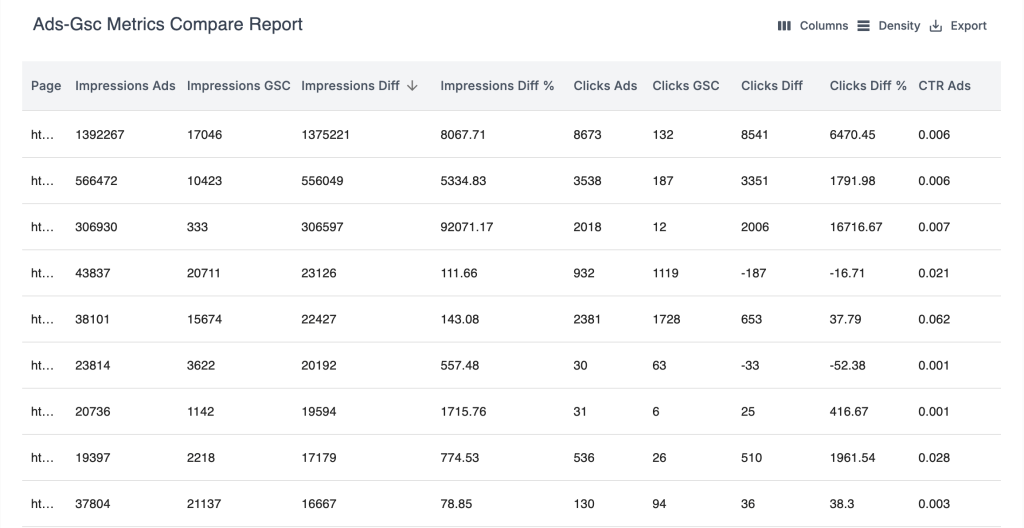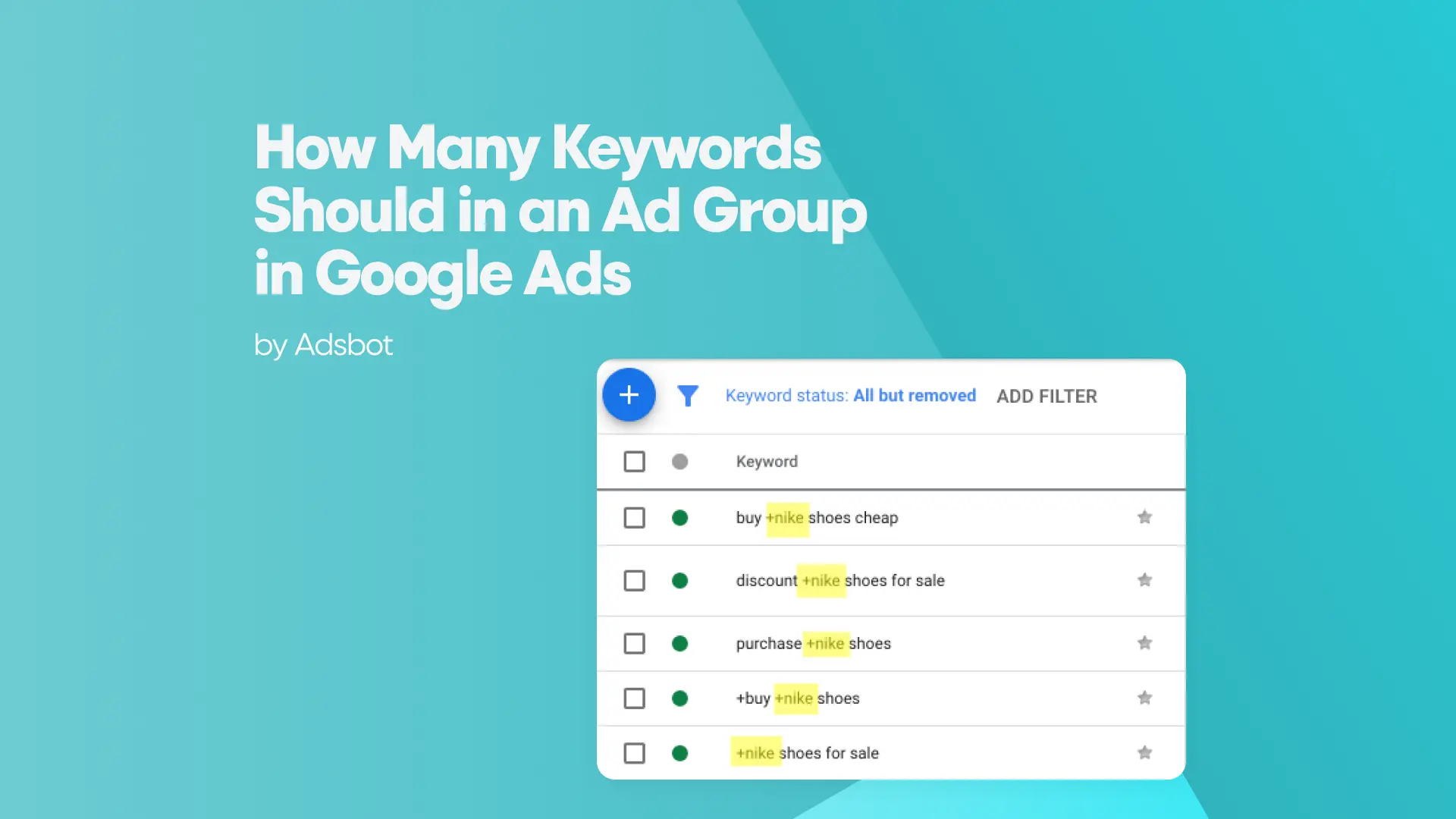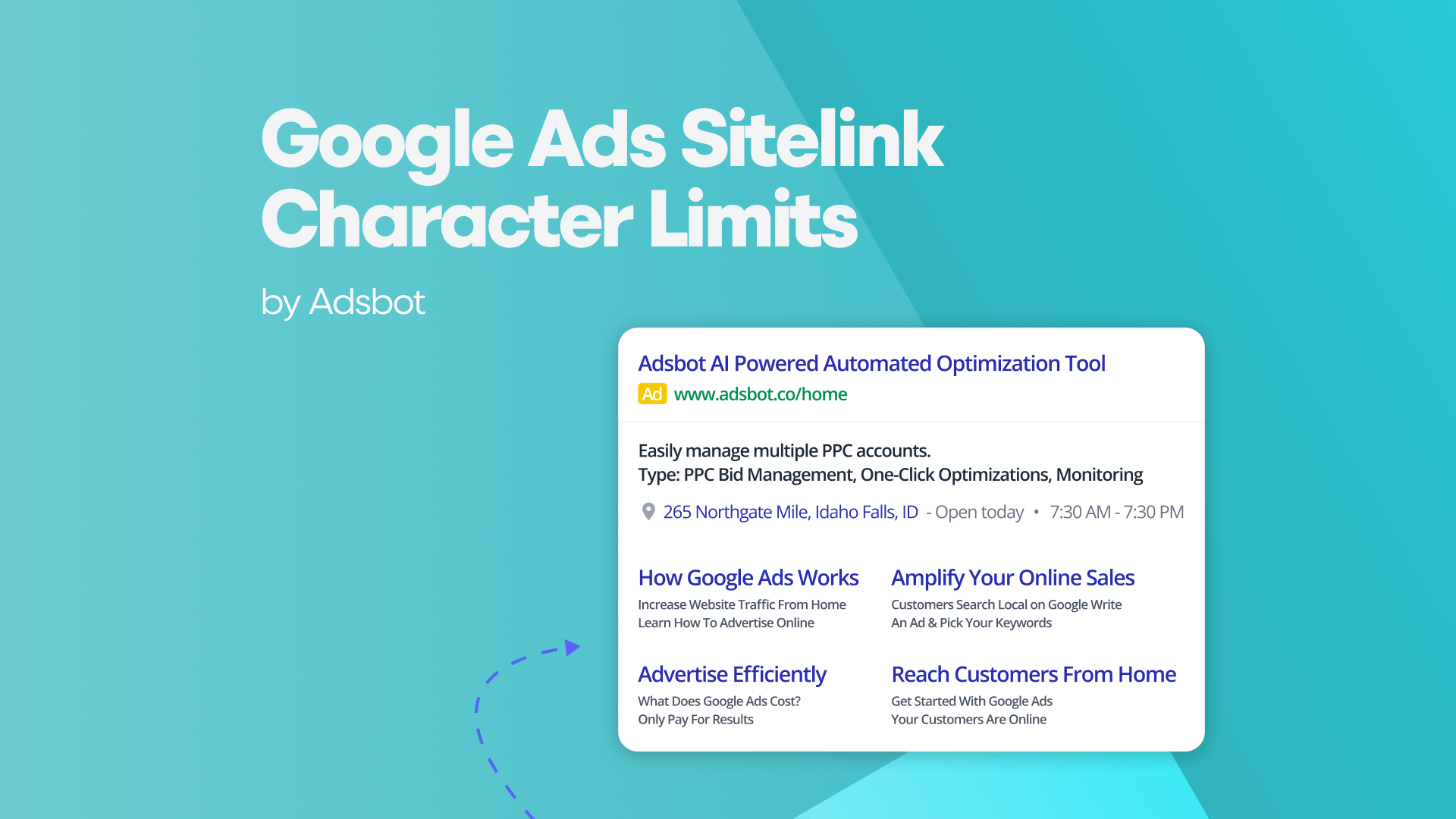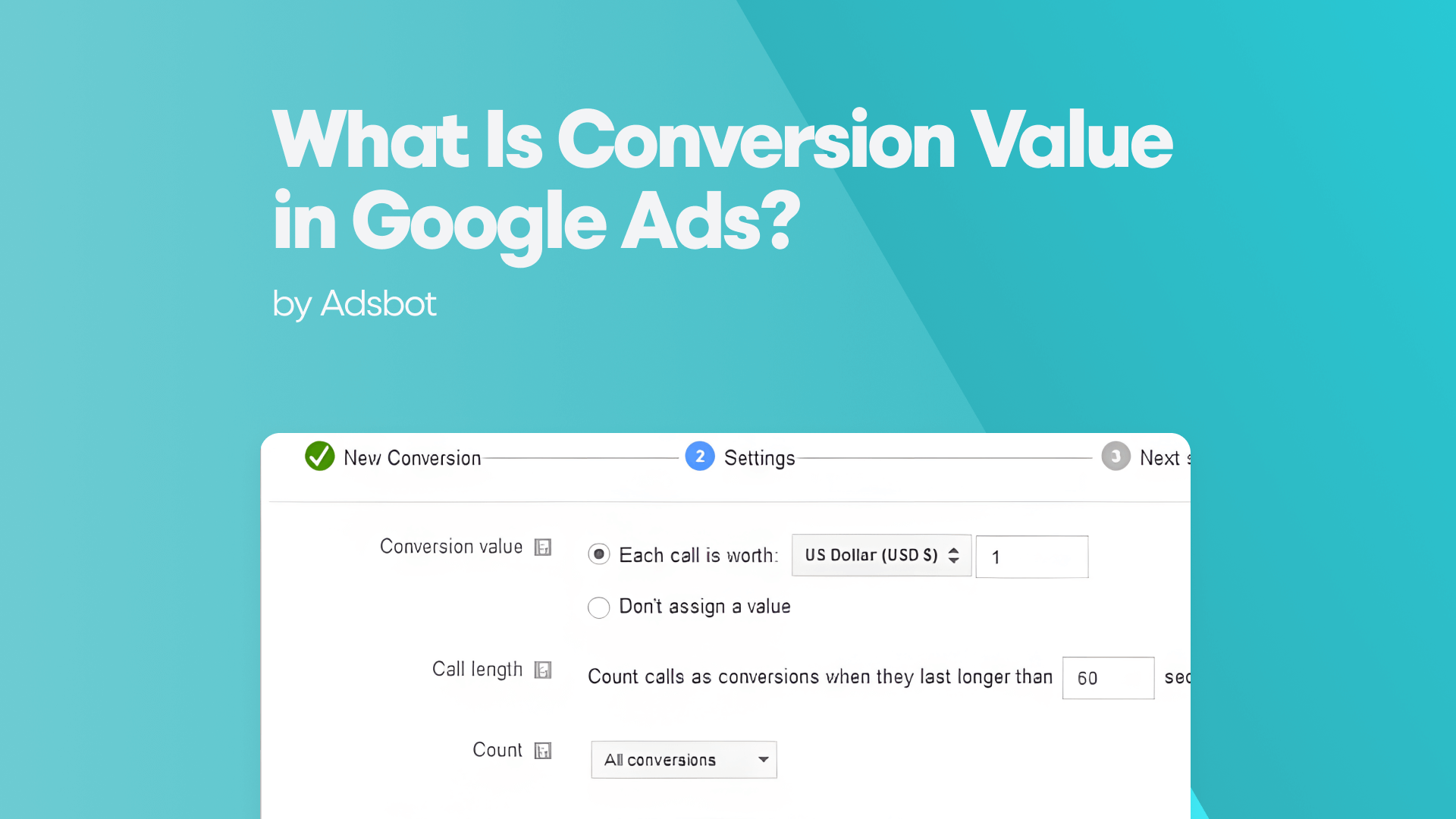Paid search analysis is, simply put, the data analysis of your ad campaigns. When running paid ads, it’s crucial to take a data-driven approach. Because if you don’t know what works or not, you’re likely to burn your budget or waste resources on campaigns that don’t work.
Keep reading and let us guide you through the best practices of paid search analysis, how to conduct it, and how to use marketing tools in this process.
What Is Paid Search Analysis?
Paid search analysis is the systematic process of evaluating, measuring, and optimizing pay-per-click advertising campaigns across search engine platforms like Google Ads, Microsoft Advertising, and other paid search networks to maximize return on investment and achieve specific business objectives. This multifaceted discipline encompasses the examination of campaign performance metrics, keyword effectiveness, ad copy resonance, landing page conversion rates, audience targeting precision, and competitive positioning within the paid search landscape. At its core, paid search analysis involves collecting quantitative data from advertising platforms, interpreting performance trends, identifying optimization opportunities, and implementing strategic adjustments that improve campaign efficiency and profitability.
The practice extends beyond simple performance monitoring to include competitive intelligence gathering, where marketers analyze rival campaigns to understand market dynamics, discover untapped keyword opportunities, and benchmark their own performance against industry standards. Effective paid search analysis requires a combination of technical proficiency with advertising platforms, analytical thinking to interpret complex datasets, strategic vision to align campaigns with broader business goals, and creative problem-solving to overcome performance challenges and capitalize on emerging opportunities in an ever-evolving digital advertising ecosystem.
Key Metrics for Evaluating PPC Campaigns
The single most critical metric for evaluating PPC campaign success is return on ad spend (ROAS), which directly measures the revenue generated for every dollar invested in paid search advertising and provides the clearest indicator of campaign profitability and overall business impact. Other essential metrics that provide comprehensive insight into campaign performance include:
- Click-through rate (CTR) reveals how compelling your ads are to searchers and indicates the relevance between your ad copy, keywords, and user intent.
- Cost per click (CPC), representing the average amount paid for each click, directly impacts your budget efficiency and competitive positioning.
- Conversion rate measures the percentage of clicks that result in desired actions such as purchases, form submissions, or phone calls.
- Quality Score, Google’s assessment of ad relevance, landing page experience, and expected CTR that influences ad rank and cost efficiency.
- Impression share, indicating the percentage of available impressions your ads are capturing, and revealing opportunities for increased market visibility.
- Cost per acquisition (CPA) is calculated as the average cost to acquire a customer or lead, and serves as a crucial profitability indicator.
Together, these metrics create a comprehensive performance dashboard that enables marketers to identify strengths to amplify, weaknesses to address, and opportunities to pursue. By monitoring these indicators consistently and understanding their interrelationships, advertisers can make data-driven decisions that systematically improve campaign performance, reduce wasted spend, and align paid search efforts with overarching business objectives and revenue targets.
Tools to Conduct Comprehensive Paid Search Analysis
Modern paid search analysis relies on a sophisticated ecosystem of specialized tools that transform raw campaign data into actionable intelligence and competitive advantages. Google Ads itself provides robust native analytics through its performance dashboard, offering granular insights into keyword performance, ad group effectiveness, audience behavior, and conversion tracking, while Google Analytics complements this with deeper website engagement metrics and attribution modeling that connects paid search clicks to ultimate business outcomes. Specialized optimization platforms like Adsbot integrate competitive analysis directly into the workflow, offering features like brand tracking to see which advertisers are bidding on your specific brand terms, helping you identify competitive threats and opportunities in real-time.
Microsoft Advertising Intelligence and Google’s Keyword Planner provide essential keyword research capabilities, revealing search volume trends, competition levels, and bid estimates that inform strategic keyword selection and budget allocation decisions. Advanced analytics platforms such as Adsbot aggregate data across multiple advertising accounts and channels, creating unified dashboards that facilitate cross-platform performance comparison and portfolio-level optimization for agencies and enterprises managing diverse paid search initiatives across various clients or business units.
Paid Search Analysis With AI
Artificial intelligence has fundamentally transformed paid search analysis from a manual, time-intensive process into an automated, predictive discipline that identifies optimization opportunities and implements improvements at speeds and scales impossible for human analysts alone. Machine learning algorithms now power smart bidding strategies that automatically adjust bids in real-time based on hundreds of contextual signals, including device type, location, time of day, audience characteristics, and historical conversion probability, optimizing for specific goals like target CPA or maximum conversion value with precision that continuously improves as more data accumulates.
Furthermore, platforms like Adsbot leverage AI to provide a comprehensive AI audit for the entire accounts, such as Google Ads, TikTok Ads, Meta Ads, and GSC, to identify systemic issues and opportunities.
This is complemented by granular AI analysis features that can break down performance by specific segments like campaigns, cities, and more, offering deep, actionable insights beyond standard reporting.
AI-driven tools analyze ad copy performance across thousands of variations, identifying linguistic patterns, emotional triggers, and messaging frameworks that resonate most effectively with different audience segments, then automatically generating and testing new ad combinations that leverage these insights to improve click-through and conversion rates. Natural language processing capabilities enable sentiment analysis of search queries and competitive ad copy, revealing user intent nuances and emotional contexts that inform more sophisticated keyword strategies and messaging approaches. Predictive analytics powered by AI forecast future campaign performance based on historical trends, seasonal patterns, and market dynamics, enabling proactive budget allocation and strategic adjustments before performance issues materialize, while anomaly detection algorithms automatically flag unusual performance patterns that may indicate technical issues, competitive threats, or emerging opportunities requiring immediate attention and strategic response.
Steps to Analyze Paid Search Competitors
The foundational step in competitive paid search analysis is identifying your true paid search competitors by conducting searches for your target keywords and documenting which brands consistently appear in sponsored positions, as these active advertisers may differ from your traditional business competitors and represent the actual competition for valuable ad placements and customer attention. Additional critical analysis steps include:
- Cataloging competitor ad copy variations to identify messaging themes, unique value propositions, calls-to-action, and promotional offers they emphasize across different keywords and audience segments
- Mapping competitor keyword portfolios using competitive intelligence tools to understand which search terms they target, their estimated bid ranges, and gaps where they’re absent that might represent opportunities
- Analyzing competitor landing page experiences by clicking through their ads to evaluate page design, conversion elements, offer clarity, and user experience factors that contribute to their conversion success
- Monitoring competitor ad scheduling patterns and geographic targeting to understand when and where they concentrate their advertising efforts and identify temporal or regional opportunities
- Tracking changes in competitor strategies over time to detect new campaign launches, budget shifts, messaging pivots, or strategic retreats that signal market dynamics and inform your own strategic adjustments
By systematically executing these competitive analysis steps on a regular cadence, marketers develop comprehensive intelligence about the competitive landscape that informs strategic decisions about keyword targeting, budget allocation, messaging differentiation, and market positioning. This competitive awareness prevents strategic blind spots, enables proactive responses to competitive threats, and identifies white space opportunities where competitors are underinvesting or absent entirely, creating chances to capture market share efficiently.
How to Identify Keyword Opportunities in Paid Search
Identifying high-value keyword opportunities in paid search requires a strategic methodology that balances search volume potential, competitive intensity, commercial intent, and alignment with your product or service offerings to discover terms that deliver qualified traffic at sustainable costs. Begin by analyzing your existing campaign data to identify high-performing keywords with strong conversion rates but limited impression share, as these represent proven winners where increased investment could capture additional qualified traffic without venturing into untested territory. Explore long-tail keyword variations that incorporate specific product attributes, use cases, locations, or qualifiers that signal high purchase intent, as these typically face less competition and attract more qualified searchers further along the buying journey, resulting in higher conversion rates despite lower search volumes.
Leverage keyword gap analysis tools to compare your keyword portfolio against competitors, revealing terms they’re targeting that you’re missing, which may represent either overlooked opportunities or strategic choices based on different business models and capabilities. Monitor search query reports religiously to discover actual search terms triggering your ads, as these often reveal unexpected keyword opportunities, new product interests, or emerging market trends that haven’t yet become competitive, allowing early-mover advantages before broader market awareness drives up costs. Consider seasonal and trending keywords by analyzing Google Trends data and industry-specific event calendars to identify cyclical opportunities where timely campaigns can capture surging demand during peak interest periods when conversion intent is elevated.
Integrating Paid and Organic Search Strategies Effectively
Adsbot features a powerful “Paid & Organic Analysis” by directly integrating Google Ads and Google Search Console (GSC) data into a single, unified report. This allows you to see the critical intersection between your paid and organic (SEO) performance for the same pages and queries.
This side-by-side comparison, as shown in the Ads-Gsc Metrics Compare Report, empowers you to make smarter, data-driven decisions. You can instantly identify keywords or pages where you have strong organic ranking (high GSC clicks) and can strategically reduce your ad spend. Conversely, you can discover high-potential pages that lack organic visibility and require a paid boost, ensuring your total search strategy is fully optimized and efficient.
Best Practices for Tracking Paid Search Performance
Establishing comprehensive conversion tracking that captures all valuable user actions, not just final purchases or lead submissions, is the foundational requirement for meaningful paid search analysis, as it enables attribution of business value to campaign elements and optimization toward actual business outcomes rather than vanity metrics. Additional critical tracking practices include:
- Implementing cross-device tracking to understand complete customer journeys that often span multiple devices, as users frequently research on mobile devices but convert on desktop, and failing to connect these touchpoints leads to misattribution and flawed optimization decisions
- Configuring appropriate attribution models that reflect your actual customer journey complexity, whether first-click, last-click, linear, time-decay, or data-driven attribution, ensuring credit distribution aligns with how customers actually discover and engage with your brand
- Establishing regular reporting cadences with standardized dashboards that track core metrics consistently over time, enabling trend identification and performance benchmarking rather than reactive analysis of isolated data points
- Creating custom segments that isolate performance by meaningful business dimensions like product category, customer type, geographic region, or device type, revealing insights that aggregate data obscures
- Integrating offline conversion tracking for businesses where valuable outcomes occur offline, such as phone calls, in-store visits, or sales closed by sales teams, in-depth offline conversion tracking, connecting digital advertising investment to the complete business impact
By implementing these tracking best practices systematically, marketers create the data foundation necessary for sophisticated analysis and optimization, ensuring decisions are based on complete, “actionable” information rather than partial datasets that misrepresent campaign performance and lead to suboptimal resource allocation. Robust tracking also enables advanced analysis techniques like cohort analysis, customer lifetime value optimization, and multi-touch attribution modeling that reveal deeper insights about campaign effectiveness and long-term business impact beyond immediate conversion metrics.
Popular Posts
-
How Many Keywords Should Be In an Ad Group in Google Ads?
Ever wondered if your Google Ads campaigns are packed with…
Read more -
Google Ads Script for Dummies: An Introduction
Imagine you have an e-commerce website that sells licensed superhero…
Read more -
Google Ads Sitelink Character Limits
Your Google Ads are cutting off in the middle of…
Read more -
What Is Conversion Value in Google Ads?
What if you could put a price tag on every…
Read more
Register for our Free 14-day Trial now!
No credit card required, cancel anytime.

